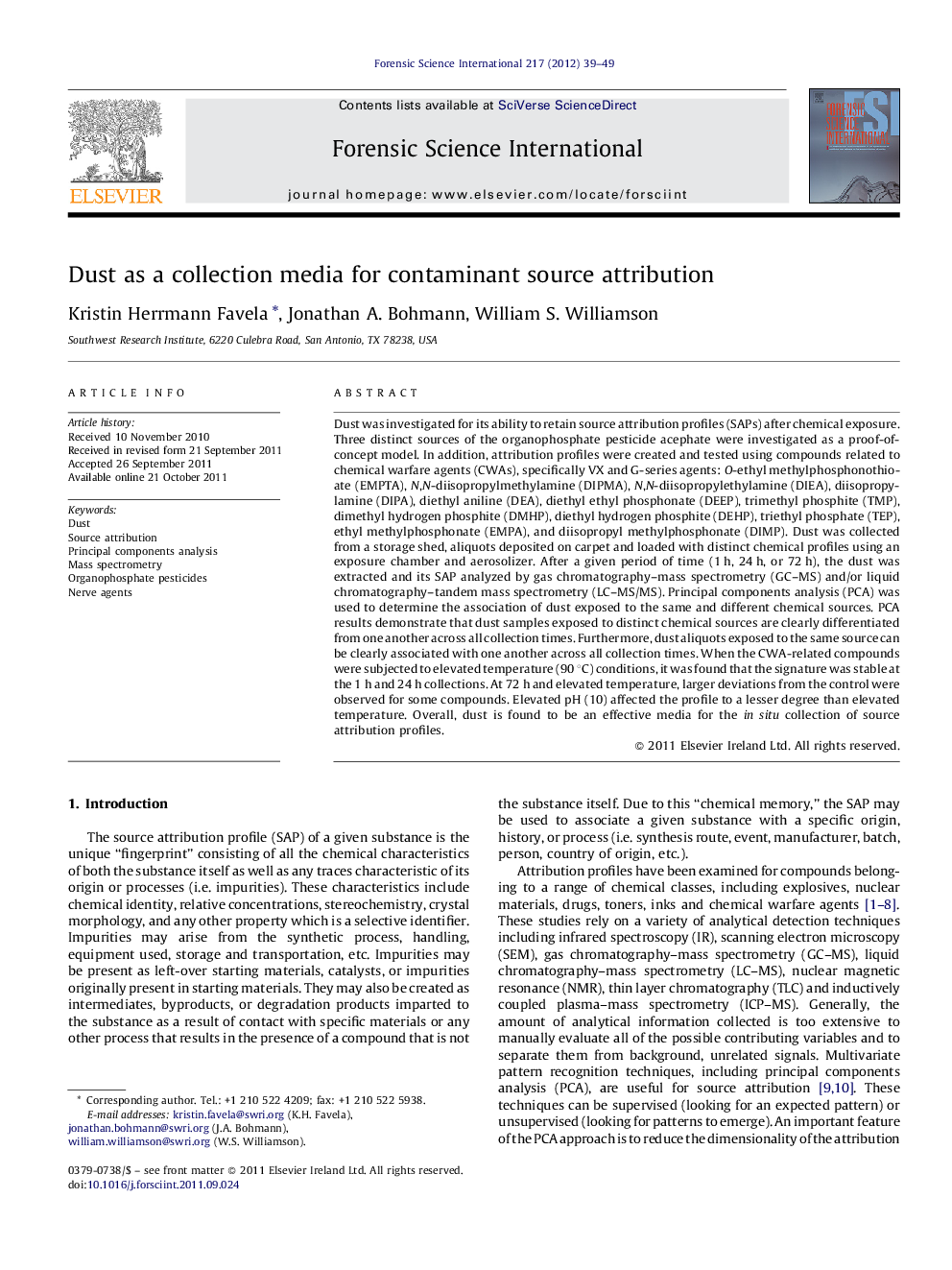| کد مقاله | کد نشریه | سال انتشار | مقاله انگلیسی | نسخه تمام متن |
|---|---|---|---|---|
| 96242 | 160460 | 2012 | 11 صفحه PDF | دانلود رایگان |

Dust was investigated for its ability to retain source attribution profiles (SAPs) after chemical exposure. Three distinct sources of the organophosphate pesticide acephate were investigated as a proof-of-concept model. In addition, attribution profiles were created and tested using compounds related to chemical warfare agents (CWAs), specifically VX and G-series agents: O-ethyl methylphosphonothioate (EMPTA), N,N-diisopropylmethylamine (DIPMA), N,N-diisopropylethylamine (DIEA), diisopropylamine (DIPA), diethyl aniline (DEA), diethyl ethyl phosphonate (DEEP), trimethyl phosphite (TMP), dimethyl hydrogen phosphite (DMHP), diethyl hydrogen phosphite (DEHP), triethyl phosphate (TEP), ethyl methylphosphonate (EMPA), and diisopropyl methylphosphonate (DIMP). Dust was collected from a storage shed, aliquots deposited on carpet and loaded with distinct chemical profiles using an exposure chamber and aerosolizer. After a given period of time (1 h, 24 h, or 72 h), the dust was extracted and its SAP analyzed by gas chromatography–mass spectrometry (GC–MS) and/or liquid chromatography–tandem mass spectrometry (LC–MS/MS). Principal components analysis (PCA) was used to determine the association of dust exposed to the same and different chemical sources. PCA results demonstrate that dust samples exposed to distinct chemical sources are clearly differentiated from one another across all collection times. Furthermore, dust aliquots exposed to the same source can be clearly associated with one another across all collection times. When the CWA-related compounds were subjected to elevated temperature (90 °C) conditions, it was found that the signature was stable at the 1 h and 24 h collections. At 72 h and elevated temperature, larger deviations from the control were observed for some compounds. Elevated pH (10) affected the profile to a lesser degree than elevated temperature. Overall, dust is found to be an effective media for the in situ collection of source attribution profiles.
Journal: Forensic Science International - Volume 217, Issues 1–3, 10 April 2012, Pages 39–49